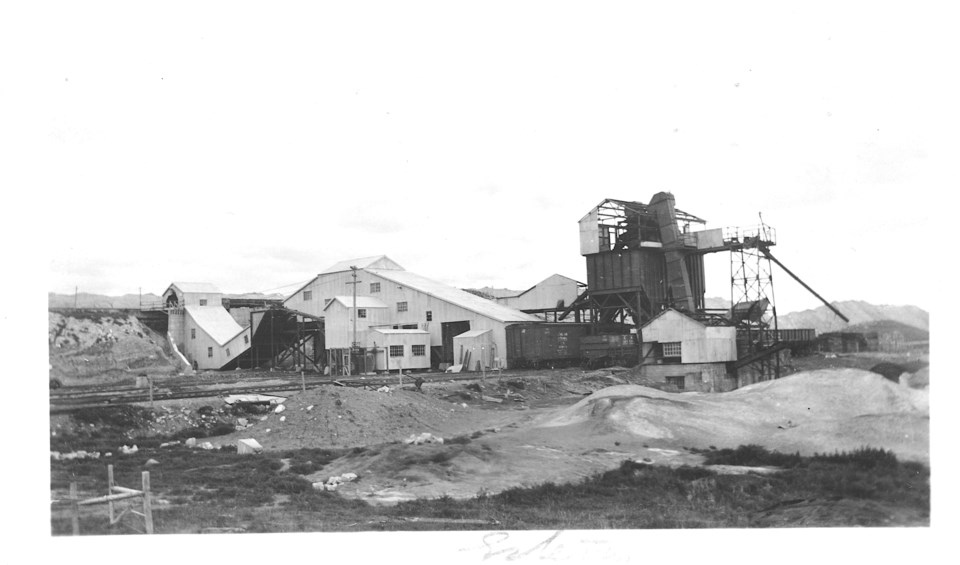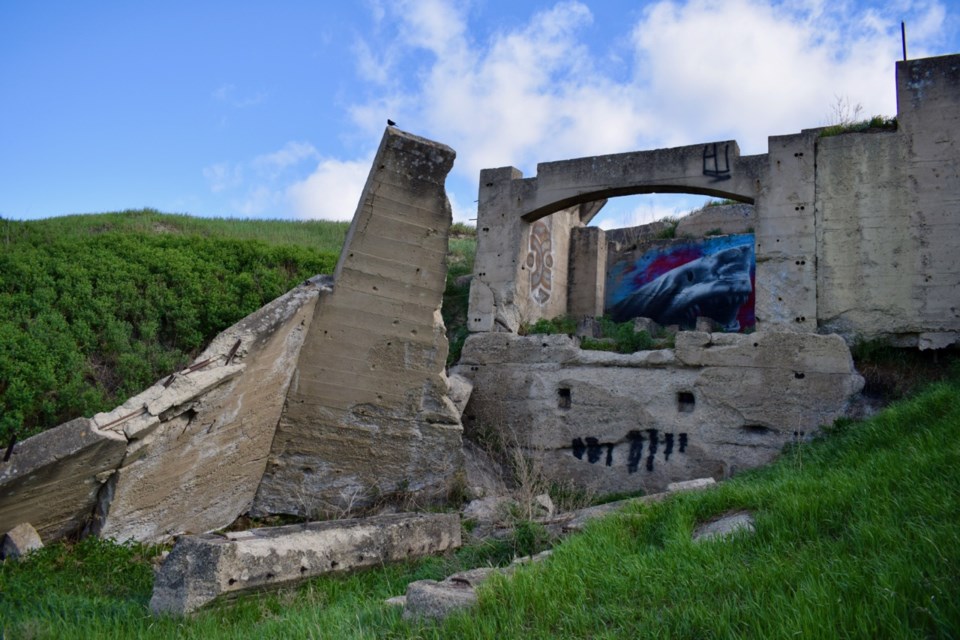The catchy shark graffiti appeared on old cement constructions located a few kilometres to the southeast of Estevan in the late May.
This creative move made by an unknown artist brought a lot of attention to the forgotten historic site. Not only did it give the site a new sharp industrial look, attracting a lot of visitors and photographers, but it also made the community question the history of the construction.
The conversation was started on Facebook and brought up many assumptions about the past of the area. Some people shared their stories of kids thinking these were castle remains, while others assumed the cement constructions were the last signs of the coal-fired Estevan Generating Station (EGS) that was decommissioned in 1992 when the Shand Power Station was opened in Estevan.
In reality the EGS was a couple of kilometres south of the site, and the only Canadian castle is located in Toronto.
While the cement constructions have been in place forever, not too many people could remember what exactly it used to be, as most people who worked there or even saw it are now gone.
By bits and pieces, the story of the area slowly came together when a few people who had the connection to the place voiced their opinions. Stacey Dupuis’ father, who used to work at the EGS, along with a number of other Estevan residents, confirmed that many years ago the cement blocks were a part of the tipple at the Truax-Traer Coal Co., Ltd., mine at Estevan.
The American Truax-Traer Coal Co. purchased the Big Lump Coal Co., located close to the contemporary Estevan Landfill, in 1930 and introduced strip mining to southeast Saskatchewan, which up to that time was dominated by underground mining. It was the first successful large scale strip mine, but the novel way of production left many small underground miners out of work. Besides, the Truax-Traer mine could produce coal at a quarter of the price of underground production, which sold at that time for $1.50 to $1.75 per tonne.

Between 1928 and 1931, the coal prices sank by 25-35 per cent per tonne, which also lead to a reduction in salaries for the deep seam miners employed by six other mines in the area.
During the 1931 riot, one of the strikers painted a steam shovel on the back of a car along with other slogans such as "We are going to live in houses now, not in piano boxes," "We refuse to starve" and "Down with the company stores." The picture referred to the big steam stripping shovel used at the Truax-Traer mine, to which many jobs were lost. The Truax-Traer mine wasn’t unionized and kept operating during the strike, thus becoming a centre of the conflict.
The Truax-Traer mine had an artesian well, tipple and the railway. The cement constructions that can be seen now used to be a part of a conveyer belt and a bottom of the tipple used for loading coal at the Truax-Traer mine. The steam stripping shovel was set on the hills that rise about 40 feet, working its way north to another ravine that was located at the very north end of the property.
The history of the Estevan Truax-Traer mine ended in the 1940s, when it was nationalized by the government. The company continued to operate in the U.S. up to the 1960s when it was taken over by the Consolidation Coal Company and became its division.
The first Estevan strip mine is long gone. Many generations grew up climbing its remains and imagining themselves С����Ƶ miners or soldiers, star travellers or knights, but once in a while, this different-looking cement construction brings up questions and raises interest towards the real history of the area and the Energy City.
This article is based on the information gained from Estevan residents, Estevan History Books, S.L. Endicott, Bienfait, The Saskatchewan Miners’ Struggle of’31, as well as from Doug Gent History Pages website at www.gent.name/sask:start.




